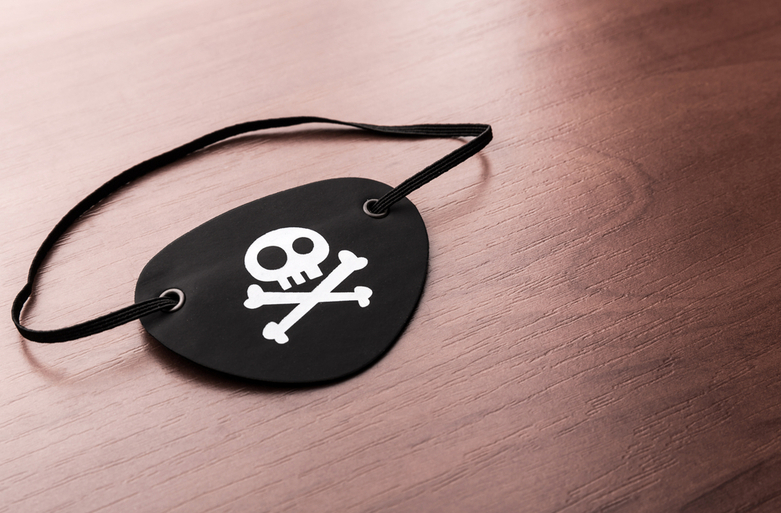Close your eyes and picture a pirate. What does the person you see look like? We’d bet our last dime that there is an eyepatch involved. But how did the eyepatch come to be so strongly linked to pirates?
The theories
Pirates and eyepatches go hand in hand like PTA moms and gluten-free cupcakes. But what brought on this connection? There are lots of theories circling the issue. Obviously, eyepatches are commonly used by people who’ve lost an eye and want to cover the injury, scar, or exposed socket. In fact, the first historically known eyepatch-wearing pirate really did lose it in battle. While losing an eye could happen during a duel, a raid, or a mere accident, that doesn’t mean that all pirates were missing an eye. Nor does it mean it was the latest trend in pirate fashion.

The best theory behind pirates’ affection for covering one of their perfectly-functioning eyes is a lot more practical than you think. You see, when spending long periods of time at sea with the ship as your only home, you lead quite a different life. One that includes armed altercations with pirate rivals. This is where an eyepatch becomes useful.
So smart, so simple
When a pirate has to go below deck, be it to retrieve some weapons or have some alone-time with a bottle of rum, there is a sudden change of lighting to face. Just like us when we go from a sunny yard into a darker room — our eyes need a little time to adjust. So, in order to save some time, pirates used to cover one eye so they could easily go in and out of the belly of the ship with at least one eye all set for the new lighting.
Eye patch of the future
Some of you may raise an eyebrow reading this, but history shows that the eyepatch theory has inspired a later practice. During WWII, Navy soldiers trained their eyes to see better in the dark. Pilots wore their own goggles/eyepatch hybrid so they could read maps and instructions in the dark.